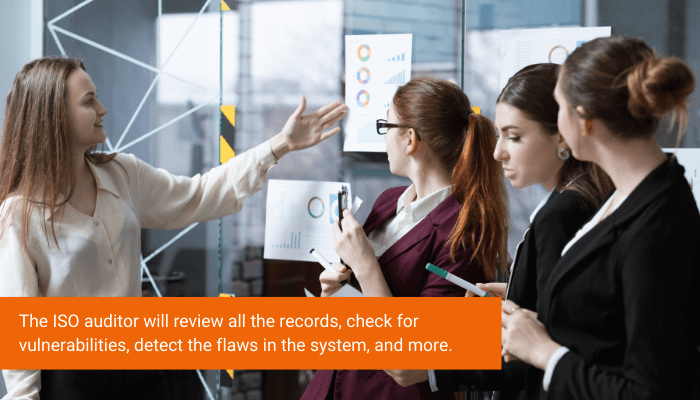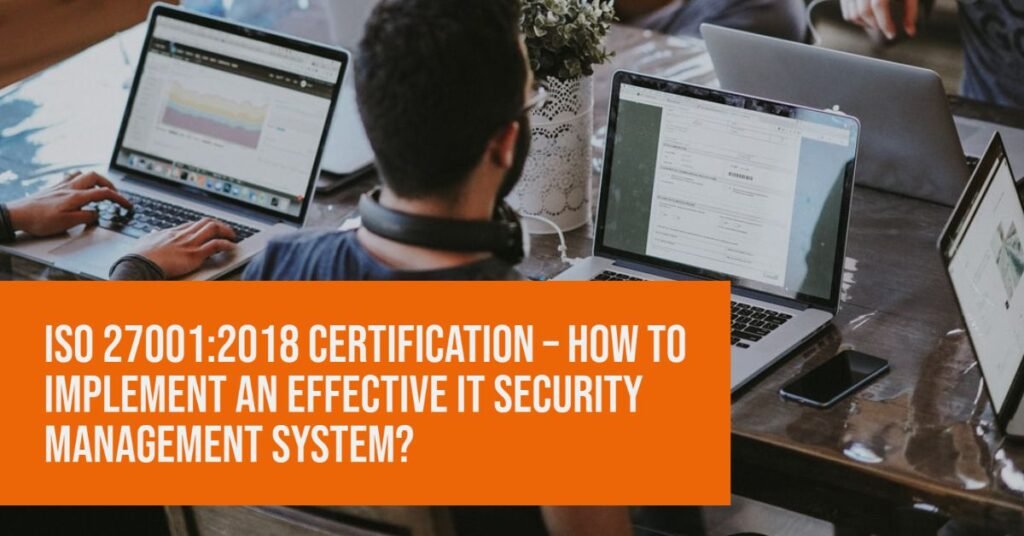ISO Certification Internal Audit is an essential step in the ISO Certification Implementation process. Either the ISO Auditor or the Quality Team members must conduct the ISO Audit in the organization.
During the ISO Audit process, the ISO Auditor will check the current system thoroughly for ISO Certification compliance and non-conformities. The ISO Consultant will audit the Quality Management System with a checklist as per the ISO Standard.
The internal audit follows certain procedures depending on the specific ISO Certification. The ISO auditor must make all the necessary improvements to the existing quality management system to meet the compliance requirements.
How will Internal Audit help in meeting ISO Compliance?
Internal Audits help in meeting the ISO Compliance by following the frameworks and audit checklist. The ISO auditor will flag and record all the non-conformities in the Quality management system.
The Quality Team must record and take the corrective actions in all the areas that need improvement to comply with the ISO standard.

Schedule the Internal Audits frequently to assess the continuous performance of the Quality Management System. ISO Certification standard has certain components and the Quality Management System must meet all the criteria specified in each component.
Each component of the ISO Certification Standard covers Process Management, People Management, Customer Satisfaction, risk assessment, Management review, Quality control, continuous improvement, and more.
Internal Audit Process for ISO 9001 Certification
The internal Auditors or Quality team must follow a few steps to generate the desired result from the auditing of the quality management system.
1. Scheduling the Audit
The Auditor must schedule and communicate the details of the Internal Audit to all the stakeholders. Send prior request with meeting invites and program agenda to all functional teams and department heads for attending the ISO Audit.
The team must be ready for the audit to get the desired result. All their daily tasks must be set aside for a specific duration to get them on board for the ISO Auditing session.
2. Planning the Audit
The ISO Auditor has to communicate the scope of the Audit, the area of coverage, and the involvement of various functional teams. The larger team must be aware of the key focus areas and goals of the ISO Audit.

Planning the ISO Audit results in successful testing of the Quality Management System and also enhanced team support.
It will help in collectively contributing to the success of the organization and implementing a robust ISO 9001:2015 Certification Standard.
3. Choosing ISO Auditors
Choosing the right internal auditor for conducting the ISO Audit is an important step. Hiring an ISO Consultant for the company is ideal to conduct the internal audit.
Else, the Quality Team in the organization will be in charge of the ISO audits. They must regularly revisit the Quality Management System and note down the irregularities in the system.
4. Conducting the Audit
When it comes to conducting the internal audit there are certain steps to follow. Depending on the complexity of the business sector, and the processes involved, the ISO Audit process differs.
The ISO auditor will review all the records, check for vulnerabilities, detect the flaws in the system, conduct review meetings, and more.
The team must record all the observations from the internal audit. The ISO Certification policy manuals and checklists are for benchmarking the existing quality management system.

The Auditor must apply the corrective actions to fix all the non-conformities and align the QMS with ISO Certification standards. The Internal Audits help the organization prepare themselves for the final audit and obtain the ISO Certification.
5. Reporting
Reporting the findings from the ISO Audit is an important step that defines the success of the ISO Certification implementation.
The ISO Certification checklist and the ISO Internal Auditing framework help in effectively recording the findings of the ISO auditing insightfully.
Enter all the non-conformities in the policy manual during the ISO Audit. A lot of the improvements to the system take place during the ISO audit process. The Auditor can fix minor non-conformities during the audit itself.
6. Follow-ups
The Frequent ISO Audits and follow-ups by the quality team will help fix all the vulnerabilities in the system. The reports will helps in saving the organization a lot of operations and functional costs.
Organizations can implement innovative and effective solutions and enhance productivity and employee involvement.
The ISO Audit also handles the risk assessment, and mitigating part. There will be a risk register that the organization must follow to record all the occurring risks and the respective corrective actions.
Hence, in a nutshell, ISO Audit contributes significantly to the success of the ISO Certification. The organization will be more than 90% ready for ISO Certification after the internal audits.
Again, depending on the organizational process complexity and scope of the ISO Certification, there might require a few changes in the management system. The quality team and ISO Consultants can collectively work on the non-conformities and re-audit the system to check for compliance again.
To know more about ISO Auditing in UAE, talk to our expert team of ISO consultants right away!
Contact Us: Aurion ISO Consultants



